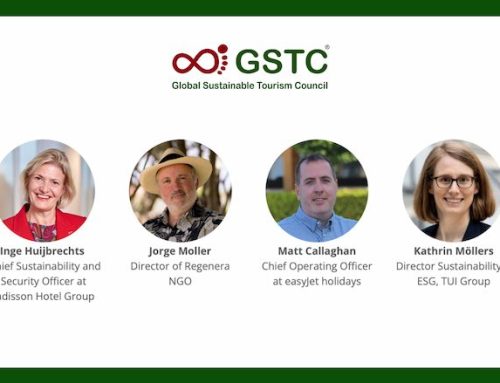The Difference Between Ecotourism and Sustainable Tourism
Many confuse between the terms “Ecotourism”, “Sustainable Tourism”, and “Responsible Travel”, so here’s a simple explanation on the differences.
Ecotourism is a niche segment of tourism in natural areas.
Sustainable Tourism does not refer to a specific type of tourism, it is an aspiration for the impacts of all forms of tourism. All forms of tourism should be sustainable. The GSTC Criteria serve as the global standards for sustainability in travel and tourism.
Responsible Travel is a term referring to the behavior and style of individual travelers.
What is Ecotourism? Ecotourism Definitions
 Ecotourism is a niche segment of tourism in natural areas. The term emerged in the late 1980s, with the raising importance of ecotourism.
Ecotourism is a niche segment of tourism in natural areas. The term emerged in the late 1980s, with the raising importance of ecotourism.
According to Fennell, “Ecotourism is a sustainable form of natural resource-based tourism that focuses primarily on experiencing and learning about nature, and which is ethically managed to be low-impact, non-consumptive, and locally-oriented (control, benefits, and scale). It typically occurs in natural areas, and should contribute to the conservation or preservation of such areas” (Fennell, 1999: 43. Ecotourism: An Introduction).
The Mohonk Agreement (2000), a proposal for international certification of Sustainable Tourism and Ecotourism, saw ecotourism as “sustainable tourism with a natural area focus, which benefits the environment and communities visited, and fosters environmental and cultural understanding, appreciation, and awareness.”
According to the UNWTO’s definition, “ecotourism refers to forms of tourism which have the following characteristics: (1) All nature-based forms of tourism in which the main motivation of the tourists is the observation and appreciation of nature as well as the traditional cultures prevailing in natural areas; (2) It contains educational and interpretation features; (3) It is generally, but not exclusively organised by specialised tour operators for small groups. Service provider partners at the destinations tend to be small, locally owned businesses; (4) It minimises negative impacts upon the natural and socio-cultural environment; (5) It supports the maintenance of natural areas which are used as ecotourism attractions by: Generating economic benefits for host communities, organisations and authorities managing natural areas with conservation purposes; Providing alternative employment and income opportunities for local communities; Increasing awareness towards the conservation of natural and cultural assets, both among locals and tourists.” These characteristics are sometimes referred to as principles of ecotourism.
The ecotourism definition by the Global Ecotourism Network (GEN): “Ecotourism is responsible travel to natural areas that conserves the environment, sustains the well-being of the local people, and creates knowledge and understanding through interpretation and education of all involved (visitors, staff and the visited)” (Global Ecotourism Network, 2016).
There are similar definitions along these lines by other organizations (such as Ecotourism Australia).
What is Sustainable Tourism? Sustainable Tourism Definition
 Sustainable Tourism refers to sustainable practices in and by the tourism industry, it is an aspiration for the impacts of all forms of tourism – all forms of tourism should be sustainable.
Sustainable Tourism refers to sustainable practices in and by the tourism industry, it is an aspiration for the impacts of all forms of tourism – all forms of tourism should be sustainable.
Sustainable tourism is “Tourism that takes full account of its current and future economic, social and environmental impacts, addressing the needs of visitors, the industry, the environment and host communities.” “Sustainability principles refer to the environmental, economic, and socio-cultural aspects of tourism development, and a suitable balance must be established between these three dimensions to guarantee its long-term sustainability” (UNEP & UNWTO, 2005: 11-12. Making Tourism More Sustainable – A Guide for Policy Makers).
The GSTC Criteria serve as the global baseline standards for sustainability in travel and tourism. The Criteria are used for education and awareness-raising, policy-making for businesses and government agencies and other organization types, measurement and evaluation, and as a basis for certification.
They are the result of a worldwide effort to develop a common language about sustainability in tourism. They are arranged in four pillars: (1) Sustainable management; (2) Socioeconomic impacts; (3) Cultural impacts; (4) Environmental impacts (including consumption of resources, reducing pollution, and conserving biodiversity and landscapes).
The GSTC Criteria have been built on decades of prior work and experience around the world, and they take into account the numerous guidelines and standards for sustainable tourism from every continent. During the process of development, they were widely consulted throughout the globe, in both developed and developing countries, in several languages. They reflect our goal in attaining a global consensus on sustainable tourism. The process of developing the Criteria was designed to adhere to the standards-setting code of the ISEAL Alliance, the international body providing guidance for the development and management of sustainability standards for all sectors. That code is informed by relevant ISO standards.
The Criteria are the minimum, not the maximum, which businesses, governments, and destinations should achieve to approach social, environmental, cultural, and economic sustainability. Since tourism destinations each have their own culture, environment, customs, and laws, the Criteria are designed to be adapted to local conditions and supplemented by additional criteria for the specific location and activity.
Are you a tourism professional? GSTC offers regular courses for professionals about sustainable tourism and the GSTC Criteria, sustainable business travel, and sustainable hotels.
What is Responsible Travel? Responsible Tourism Definition
 Responsible Travel (or sometimes referred to as responsible tourism) is used when referring to the behavior of individual travelers aspiring to act and make choices according to sustainable tourism practices.
Responsible Travel (or sometimes referred to as responsible tourism) is used when referring to the behavior of individual travelers aspiring to act and make choices according to sustainable tourism practices.
Tourists and travelers can also influence businesses to follow sustainability practices and offer more sustainable products and services.
As a traveler, you can learn more about how to be a responsible traveler by visiting this page: GSTC for Travelers.
Want to Learn More?
The GSTC website is full of resources. Make sure you visit the relevant pages for you. Also, videos are available on the GSTC YouTube channel.
GSTC offers regular courses about sustainable tourism and the GSTC Criteria, as well as sustainable business travel, and sustainable hotels.




